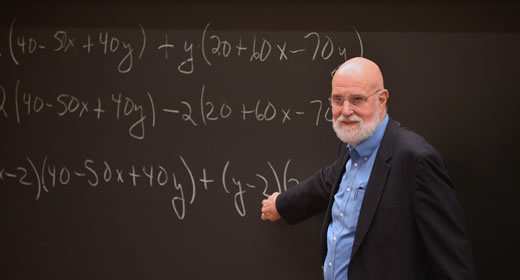
Run the Numbers by Elizabeth Wason
Excerpted from "The Next Big Thing," in the fall 2014 edition of LSA Magazine
In some communities, even if you're not in prison, prison is all around you.
"In Saginaw, your options are limited," says David McMillon (’12, M.S. ’14). “You’re kind of imprisoned mentally, because that’s all you see. That’s life.” McMillon grew up watching the prison system in Saginaw, Michigan, swallow some of his close relatives and friends. When McMillon was 12 years old, his cousin was shot and killed. Experiencing the effects of violent crime and incarceration made him realize that he had a personal stake in improving the situation for himself and others. He grew determined to use research to make a positive impact on the problems that frustrated him.
As an undergraduate in LSA, McMillon was a Douglass Houghton Scholar who majored in math and minored in complex systems; he recently earned a dual master’s degree in math and industrial and operations engineering at U-M. With help from LSA’s Center for the Study of Complex Systems, McMillon has taken a holistic view of the social issues surrounding incarceration. Instead of simply lamenting a broken system, McMillon asks, “What do we mean by ‘system’? Can we map it out? How does it actually work? And if we understand that, how do we optimally deal with it?”
Collaborating with Professor Carl Simon (mathematics, public policy, and complex systems) and Professor Jeff Morenoff (sociology), McMillon built a mathematical model of criminal activity and incarceration based on existing models of the spread of disease. He used the model to figure out “the knobs that can be turned in this complex system,” as he puts it, and “how we need to tune those parameters to decrease crime in the long run.”
He found that throwing more people in prison paradoxically can lead to more crime. To ensure lower crime rates, the more effective strategy is to create policies and interventions that reduce the likelihood of people committing crime in the first place, like devoting resources to early education and keeping kids in school—which means that just like with diseases, prevention is the best cure.
The more ambitious goal, which McMillon says he plans to tackle next, is to figure out how to minimize crime and incarceration with real-world budgets in mind, so he can help change life for people in places like Saginaw.
“I feel that the research I’m doing is much bigger than myself,” McMillon says. “I have a real sense of urgency. For that reason, I try to make some progress on it every day.”
